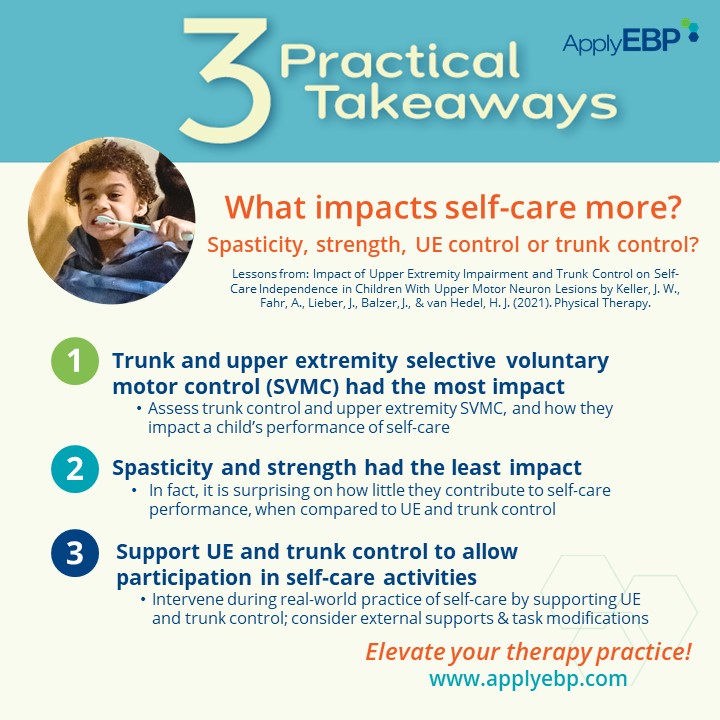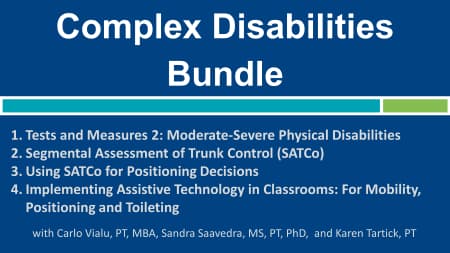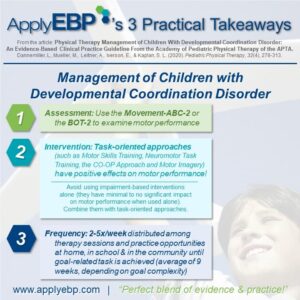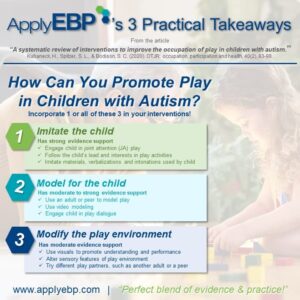3 Practical Takeaways
What Impacts Self-care More: Spasticity, Strength, UE Control or Trunk Control?

With so many variables to consider, it is great to know which ones impact a function or occupation more than others. This knowledge has the potential to assist us in selecting targeted interventions.
In this week’s #3PracticalTakeaways, we share with you our lessons from the article by Keller et al (2021) on how much spasticity, strength, upper extremity (UE) control and trunk control contributes to self-care independence in children with upper motor neuron lesions. I think it’s behooves us to really assess trunk control and UE Selective Voluntary Motor Control (SVMC). And then make informed decisions on how we can intervene best to promote self-care skills. If you want more information about SVMC, read this SeekFreaks article 2 Tests of Selective Motor Control – SCALE and SCUES.
Are you surprised with any of these findings? Add your takeaway or read others’ in the comments section below.
Click below to download,
print and share the infographics
Continue to Elevate Your Practice with Our...
Featured School
Symposium
Featured Live
Workshop
Featured On-Demand
Webinar
Segmental Assessment of Trunk Control
Featured Webinar
Bundle
Complex Disabilities Bundle
Reference:
Keller, J. W., Fahr, A., Lieber, J., Balzer, J., & van Hedel, H. J. (2021). Impact of Upper Extremity Impairment and Trunk Control on Self-Care Independence in Children With Upper Motor Neuron Lesions. Physical Therapy.





